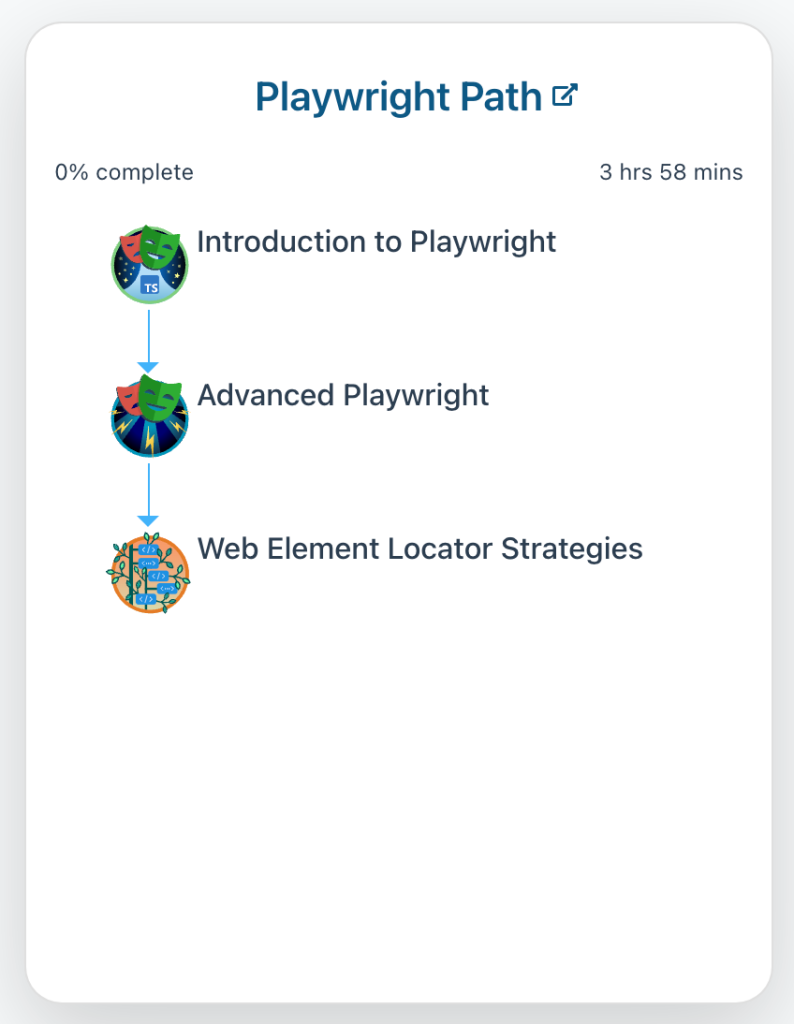Playwright is an awesome new framework for modern web testing. In this article, let's learn what testing challenges we face in testing, what our goals should be, and how Playwright can help!
Playwright is an awesome new web testing framework, and it can help you take a modern approach to web development. In this article, let’s learn how.
Asking tough questions about testing
Let me ask you a series of questions:
Question 1: Do you like it when bugs happen in your code? Most likely not. Bugs are problems. They shouldn’t happen in the first place, and they require effort to fix. They’re a big hassle.
Question 2: Would you rather let those bugs ship to production? Absolutely not! We want to fix bugs before users ever see them. Serious bugs could cause a lot of damage to systems, businesses, and even reputations. Whenever bugs do slip into production, we want to find them and fix them ASAP.
Question 3: Do you like to create tests to catch bugs before that happens? Hmmm… this question is tougher to answer. Most folks understand that good tests can provide valuable feedback on software quality, but not everyone likes to put in the work for testing.
Why the distaste for testing?
Why doesn’t everyone like to do testing? Testing is HARD! Here are common complaints I hear:
Tests are slow – they take too long to run! Tests are brittle – they break whenever the app changes! Tests are flaky – they crash all the time! Tests don’t make sense – they are complicated and unreadable! Tests don’t make money – we could be building new features instead! Tests require changing context – they interrupt my development workflow!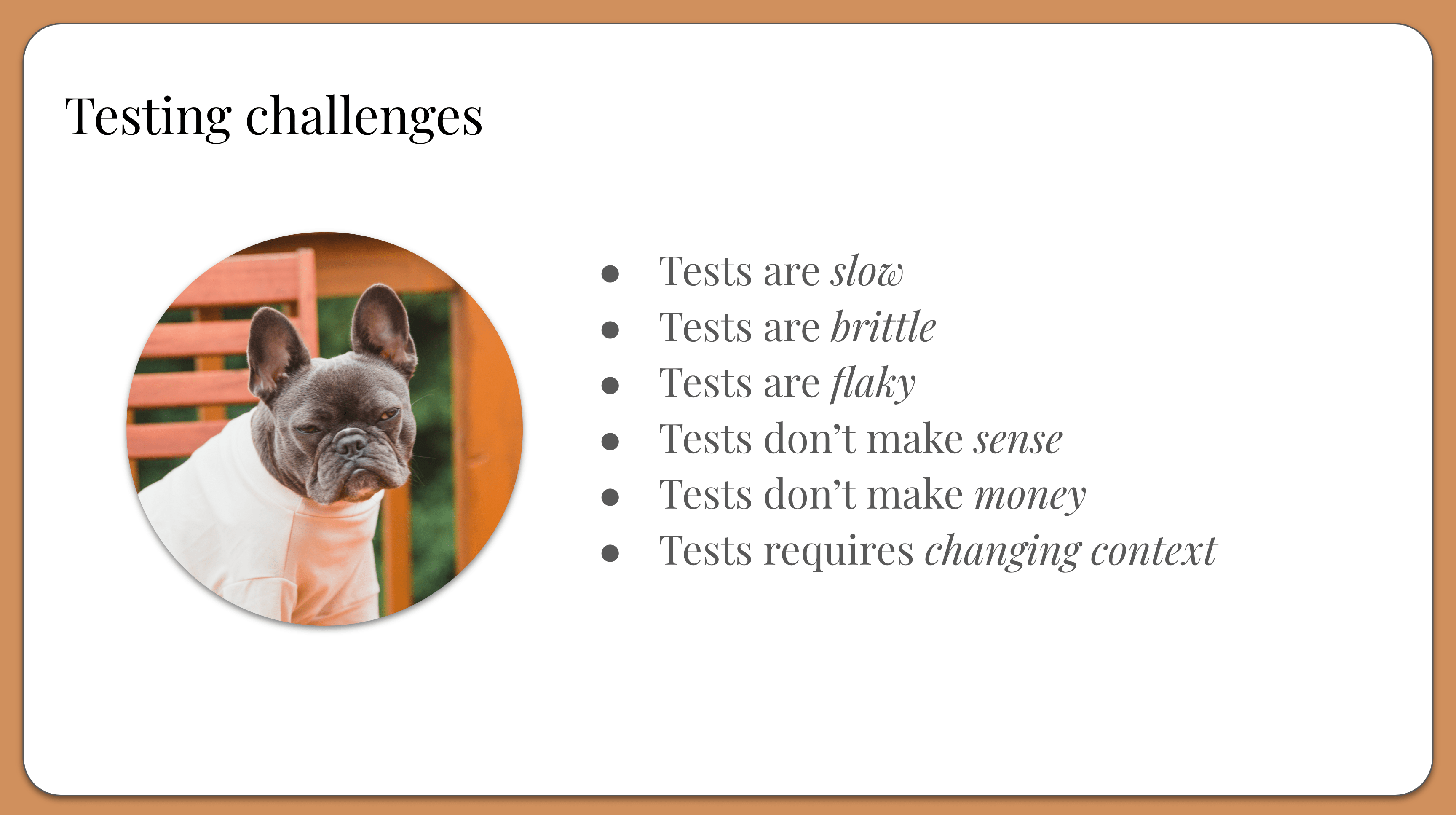
These are all valid reasons. To mitigate these pain points, software teams have historically created testing strategies around the Testing Pyramid, which separates tests by layer from top to bottom:
UI tests API tests Component tests Unit tests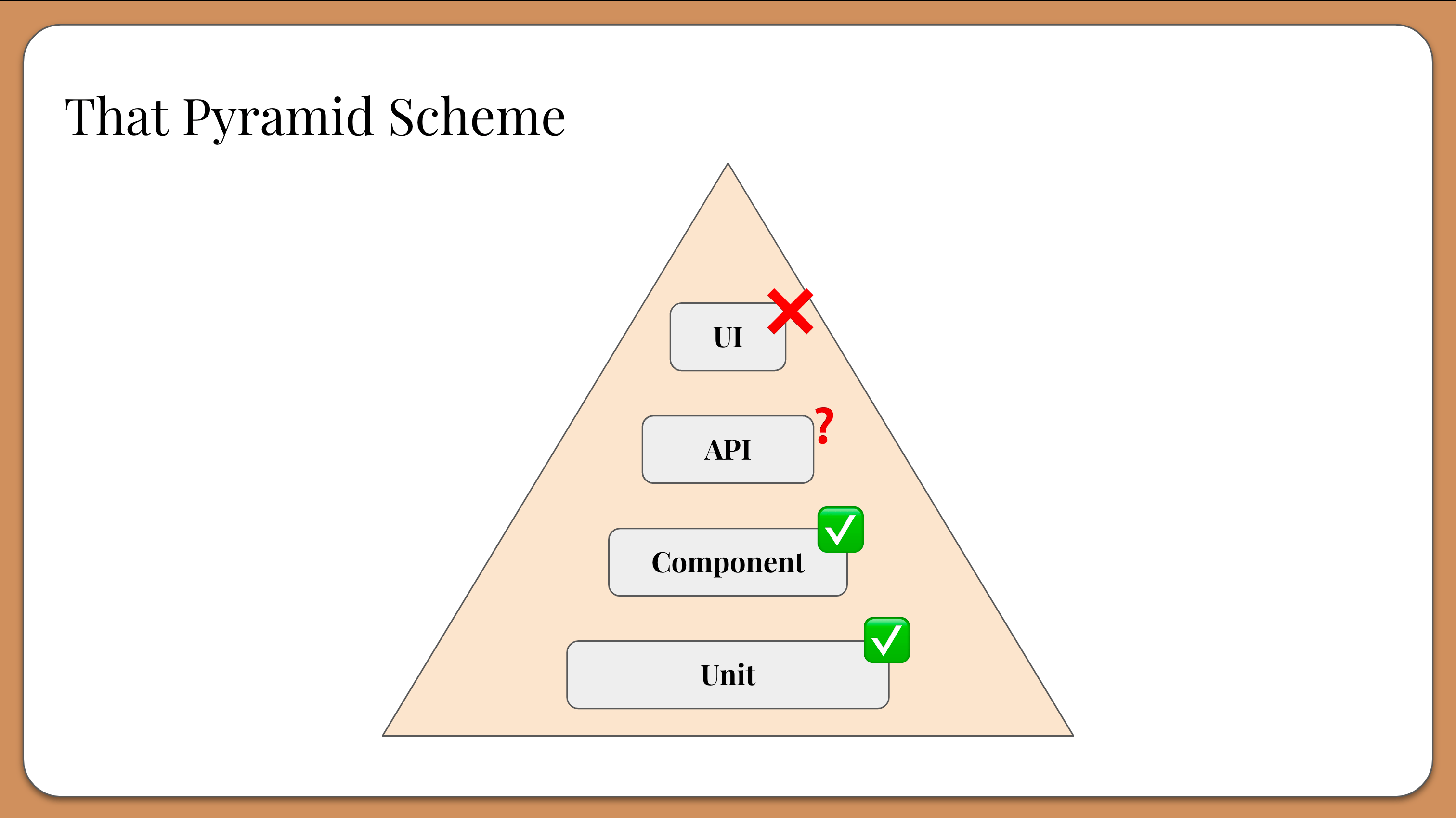
Tests at the bottom were considered “better” because they were closer to the code, easier to automate, and faster to execute. They were also considered to be less susceptible to flakiness and, therefore, easier to maintain. Tests at the top were considered just the opposite: big, slow, and expensive. The pyramid shape implied that teams should spent more time on tests at the base of the pyramid and less time on tests at the top.
End-to-end tests can be very valuable. Unfortunately, the Testing Pyramid labeled them as “difficult” and “bad” primarily due to poor practices and tool shortcomings. It also led teams to form testing strategies that emphasized categories of tests over the feedback they delivered.
Rethinking modern web testing goals
Testing doesn’t need to be hard, and it doesn’t need to suffer from the problems of the past. We should take a fresh, new approach in testing modern web apps.
Here are three major goals for modern web testing:
Focus on building fast feedback loops rather than certain types of tests. Make test development as fast and painless as possible. Choose test tooling that naturally complements dev workflows.
These goals put emphasis on results and efficiency. Testing should just be a natural part of development without any friction.
Introducing Playwright
Playwright is a modern web testing framework that can help us meet these goals.
It is an open source project from Microsoft. It manipulates the browser via (superfast) debug protocols It works with Chromium/Chrome/Edge, Firefox, and WebKit It provides automatic waiting, test generation, UI mode, and more It can test UIs and APIs together It provides bindings for JavaScript/TypeScript, Python, Java, and C#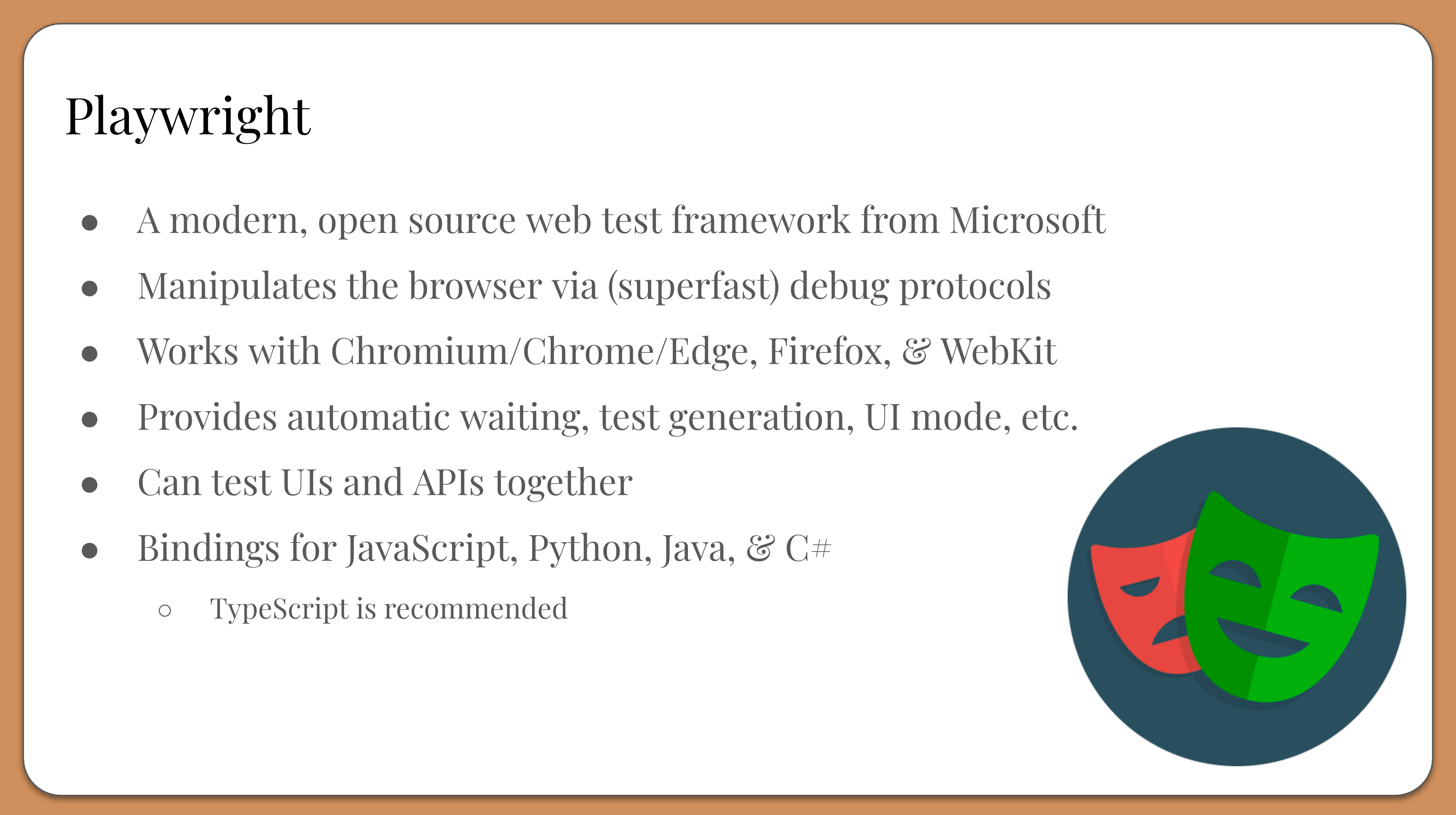
Playwright takes a unique approach to browser automation. First of all, it uses browser projects rather than full browser apps. For example, this means you would test Chromium instead of Google Chrome. Browser projects are smaller and don’t use as many resources as full browsers. Playwright also manages the browser projects for you, so you don’t need to install extra stuff.
Second, it uses browsers very efficiently:
Instead of launching a full, new browser instance for each test, Playwright launches one browser instance for the entire suite of tests. It then creates a unique browser context from that instance for each test. A browser context is essentially like an incognito session: it has its own session storage and tabs that are not shared with any other context. Browser contexts are very fast to create and destroy. Then, each browser context can have one or more pages. All Playwright interactions happen through a page, like clicks and scrapes. Most tests only ever need one page.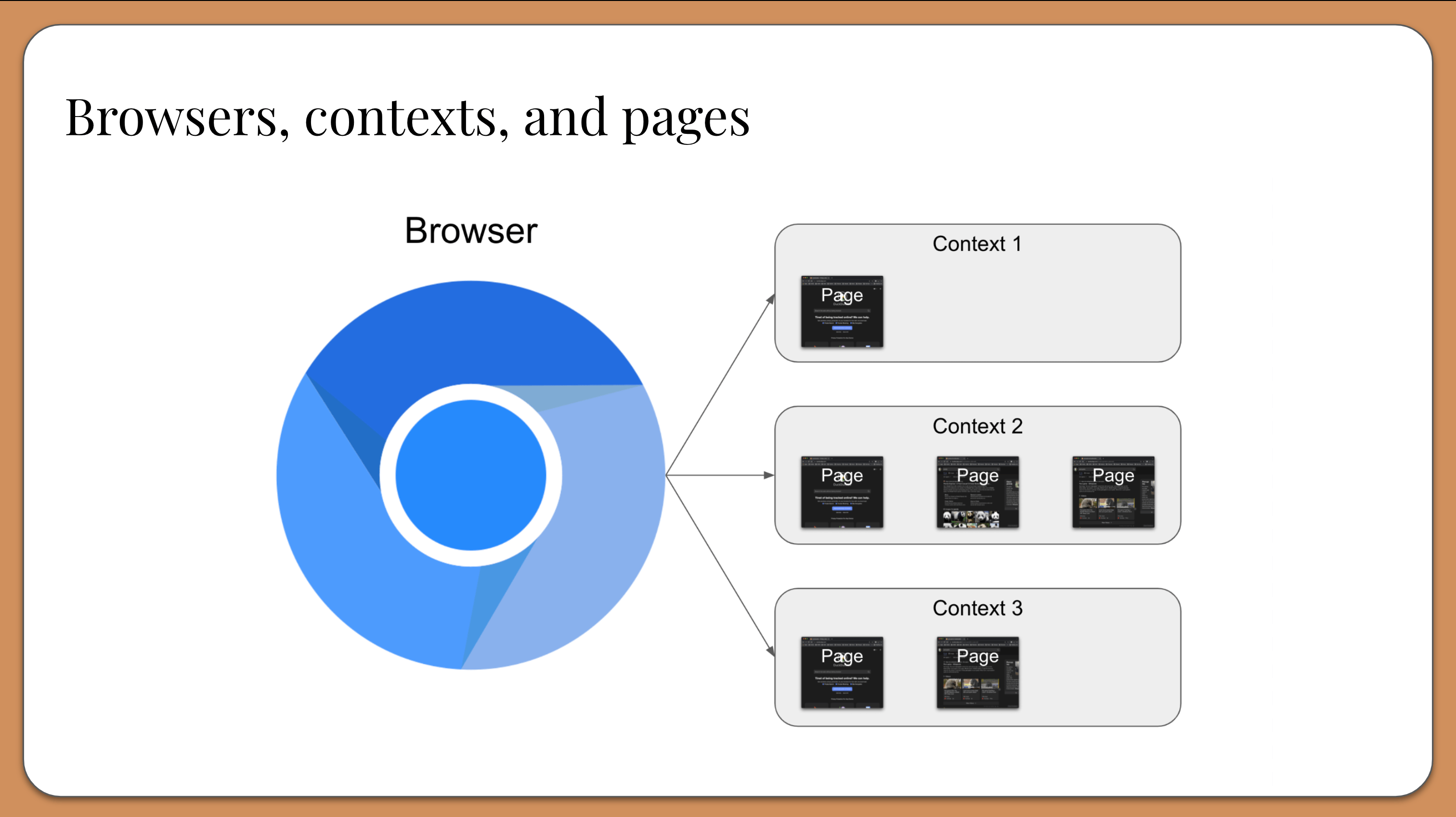
Playwright handles all this setup automatically for you.
Comparing Playwright to other tools
Playwright is not the only browser automation tool out there. The other two most popular tools are Selenium and Cypress. Here is a chart with high-level comparisons:

All three are good tools, and each one has their advantages. Playwright’s main advantages are that offers excellent developer experience with the fastest execution time, multiple language bindings, and several quality-of-life features.
Learning Playwright
If you want to learn how to automate your web tests with Playwright, take my tutorial, Awesome Web Testing with Playwright. All instructions and example code for the tutorial are located in GitHub. This tutorial is designed to be self-guided, so give it a try!
Test Automation University also has a Playwright learning path with introductory and advanced courses:
Playwright is an awesome new framework for modern web testing. Give it a try, and let me know what you automate!



